Chicago-born filmmaker Michael Mann’s first theatrical release, THIEF, starred James Caan and featured an undeniable neon-drenched style and an excellent score by Tangerine Dream. His next feature was the supernatural thriller THE KEEP, which most people consider Michael Mann’s version of a horror film, and while THE KEEP is certainly creepy and weird, 1986’s MANHUNTER is a more terrifying piece.
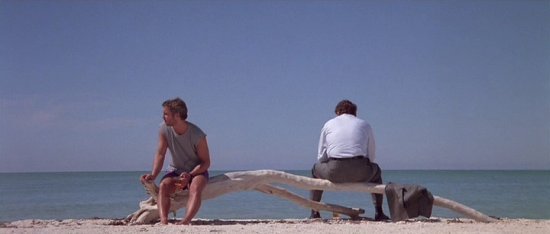
Based on Thomas Harris’ novel Red Dragon, MANHUNTER for a while was relegated to being the answer to the trivia question: “What was the first movie to feature Dr. Hannibal Lecter?” Anthony Hopkins took the role mainstream in SILENCE OF THE LAMBS, which was a huge, award-winning hit in 1991, and which led to MANHUNTER getting a little bit of added exposure, but people expecting a film more like SILENCE OF THE LAMBS may have been disappointed by Mann’s more subtle approach and Brian Cox’s very different portrayal of Lecktor. (Lecter is spelled “Lecktor” in MANHUNTER but not in Red Dragon or in any of the subsequent Lecter films.)

There is certainly a bit of confusion about MANHUNTER‘s original title RED DRAGON, which has a very specific thematic reason for being, and why it was changed. The story goes that producer Dino De Laurentis had produced another bit of neon-noir, Michael Cimino’s YEAR OF THE DRAGON the previous year, which was a box-office bomb. DeLaurentis, a superstitious man apparently, didn’t want to release another film with the word “dragon” in the title, and thus Mann’s film was christened MANHUNTER. Peterson’s take is that the title RED DRAGON sounded too much like a karate movie.
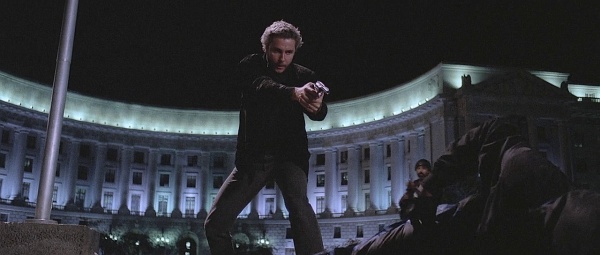
MANHUNTER features another Chicago boy and early Michael Mann associate (he had a walk-on role in THIEF), William Petersen as Detective Will Graham, a former F.B.I. profiler brought out of an early retirement by his old boss, Jack Crawford (Dennis Farina) to help capture a new serial killer on the loose whom the press has nicknamed “The Tooth Fairy” (Tom Noonan). In order to get into the mind of “The Tooth Fairy”, Graham must consult Dr. Hannibal Lecktor, an incarcerated mass murderer who Graham captured before his retirement. Graham must delve into dark parts of his mind and soul if he’s going to catch “The Tooth Fairy” before he claims another family of victims.

What follows is one of the slickest, smartest and coolest crime thrillers of the 1980s. This film is arguably Michael Mann’s masterpiece; it is an amalgamation of all of Mann’s best qualities distilled into a lean, mean two hours. MANHUNTER represents Michael Mann in the role of the director as auteur, perhaps more vividly than he has ever been since.

William Petersen’s Will Graham is a tortured man, with just the right edge of dangerous. SILENCE OF THE LAMBS focused heavily on the relationship between Clarice Starling and Hannibal Lecter but MANHUNTER paints a picture of Graham’s relationship with himself. Capturing Lecktor brought Graham to the darkest reaches of his soul, making Graham question his own motives as well as his own morality. Graham speaks to himself frequently and intensely throughout the film, and in the hands of a less talented actor, these scenes could have come off as cheesy. Peterson brings an intense edge to the character, not only with his manner of speaking, but also in the way he moves his body and his eyes. In a correspondence, “The Tooth Fairy” describes Graham as “very purposeful looking” and Peterson brings that quality to the character in spades.

After shooting MANHUNTER, Petersen was unable to shake the character of Will Graham, much the same way Graham wasn’t able to shake the specter of Lecktor. This affected Petersen so much that he dyed his hair blonde, so that when he looked in the mirror he wouldn’t see Will. Petersen unfortunately never got to reprise the role, but his turn as Richard Chance in William Friedkin’s TO LIVE AND DIE IN L.A. feels like a spiritual continuation of the character, and that film is another notable entry in the “neon-noir” subgenre.

Tom Noonan makes an undeniable impression as Francis Dollarhyde, the man otherwise known “The Tooth Fairy.” Michael Mann’s films focus on complicated men on both sides of the law. Halfway through, the film shifts gears and focuses on the day-to-day reality of Dollarhyde. In this case, not only do we get to see a glimpse of the evil that may reside in Graham, but we also get a faint glimmer of the good that may be in Dollarhyde. Noonan portrays Dollarhyde as slightly sympathetic, as he attempts to woo the blind Reba McClane (Joan Allen), but his internal evil eventually takes him over in the form of the Red Dragon. Mann is a stickler for actorly authenticity in his films, and MANHUNTER is no exception. Noonan did extensive research on serial killers, and did not associate with the rest of the cast and crew during shooting, to better lend him a mysterious vibe. His Dollarhyde is vulnerable for a moment, but then his sheer awful power comes through in a manner that has indelibly impacted most audiences who have witnessed it.
Anthony Hopkins will forever be associated with the role of Hannibal Lecter. It garnered him a Best Actor Oscar, and with good cause. His Lecter was a very charming man; that charm only slightly covered the menace that lay beneath his very prissy exterior. Brian Cox’s Lecktor is more of a brute force. Where Hopkins was very coy, Cox is in your face, up front. He’s not as charming but still has the ability to get under Will Graham’s and the audience’s skin.
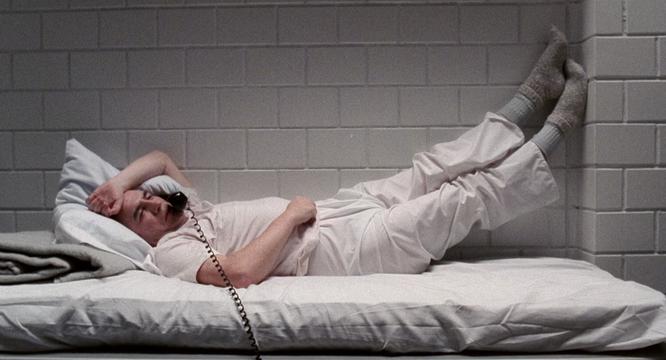
Unfortunately, as in most of Mann’s work, the women are not given much to do. It’s a trope of most of Mann’s output that the wife or girlfriend is a reason to live for our heroes, like Tuesday Weld is to James Caan in THIEF, Amy Brennan is to Robert De Niro in HEAT, and Marion Cotillard is to Johnny Depp in PUBLIC ENEMIES. In MANHUNTER, Kim Greist and Joan Allen give it their all, particularly Allen as the blind Reba McClane. Allen studied at the New York Institute of the Blind in order to bring an authenticity to her role.

MANHUNTER marks the first time that Michael Mann worked with his longtime director of photography, Dante Spinotti. The pair would have a very successful working relationship for years, with Spinotti photographing LAST OF THE MOHICANS, HEAT, THE INSIDER, and PUBLIC ENEMIES. Spinotti is quoted as saying that there is “no such thing as an accidental shot” in MANHUNTER. Spinotti perfectly compliments Mann’s visual style. Scenes between Will and Molly Graham, portrayed by Kim Griest, are lit in moody, romantic blues, while Francis Dollarhyde’s home is drenched in subversive greens and magentas. Mann’s choice of shots is very voyeuristic, with long tracking shots through hallways and doorways, giving the viewer a sense that there is danger around every corner.

This film represents Mann at the height of his creative, visual power. The framing on his shots is exquisite, resembling pop art or frames from a comic book, from Graham and Crawford on the beach, to Graham and his wife in a fully exposed hotel room. Mann’s existentialisy angles focus on objects such as the light in Doctor Chilton’s office, the sculpture on Crawford’s desk, or between two chairs in the F.B.I. office.

There is a perfectly realized visual sequence when Graham first visits Lecktor in his cell. It’s discussed in the film that capturing Lecktor brought Graham to the edge of his sanity; Graham spent time in a psychiatric hospital after those events and Lecktor knows this fact and knows how to exploit it. Lecktor taunts Graham, mentioning Graham’s aftershave being packaged in a bottle with a little ship on it — I always imagined Will Graham as a Drakkar Noir man. Lecktor remains in control while attempting to unravel the mind of Graham. Each man is shot through the bars, cutting the shots back and forth in the conversation, prompting the viewer to consider if perhaps Graham and Lecktor are so different after all, and if perhaps Graham should be locked up as well. If there ever was an argument for Michael Mann to ditch digital and go back to shooting on film, MANHUNTER is it.
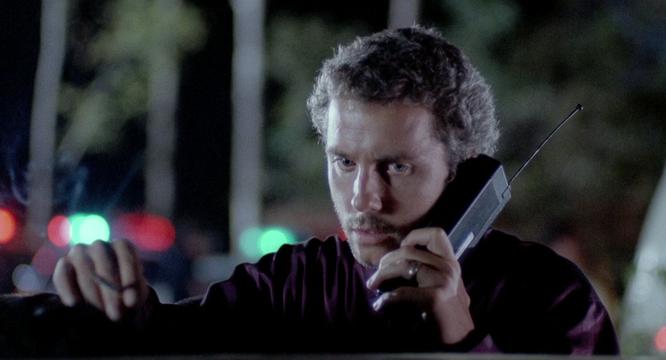
Miami Vice (1984-1989) was a certified television hit, on which Mann was an executive producer, and its influence can be felt on the visual style and the wardrobe choices of MANHUNTER. Seeing Michael Mann in interviews, one can tell that he’s got quite a bit of style himself, rarely seen in simply a T-shirt and shorts. That stylishness transfers to his characters. His Will Graham is clad in bright colors and black jeans with a hip, mid-century, atomic fleck sport coat. The designer clothing of Graham and Dollarhyde have a certain Miami Vice flavor to them, a result of Mann’s prodigious preparation and his laser focus upon all details of the story. MANHUNTER had such a profound impact on me that I spent years looking for a blazer similar to Graham’s — eventually my mom found one on eBay for a steal.

What truly drives MANHUNTER is its tension, which doesn’t necessarily ratchet up gradually, so much as it remains at a sustained level until the climax. Time is an enemy that our heroes are constantly fighting against. The opening scene, with it’s foreboding score, as Dollarhyde enters the Jacobi house, conjures that certain sense of dread which all human beings have felt at one time or another; the thought of an intruder in your home. It’s a very subtle moment that sets up the rest of the film. Dollarhyde’s murders occur on a lunar cycle, and the detectives have until each full moon to try and catch him.
On a smaller scale, Graham and Crawford race against time to decipher a note found in Lecktor’s cell, sent from Dollarhyde. This is a particularly intense series of scenes, as the audience knows that our boys only have four hours to crack the message. It’s Mann’s attention to detail and the constant motion of the characters that help keep this tension high.
 The film is chock full of great “Mann-erisms” that loyal fans love to see and hear in all of his films; outside of the visuals there is some great tough-guy dialogue. There are more than a few great scenes of Peterson and Farina shouting at one another, at once very affected and very real: Mann knows how men talk to one another. Michael Mann movies are very much guy movies.
The film is chock full of great “Mann-erisms” that loyal fans love to see and hear in all of his films; outside of the visuals there is some great tough-guy dialogue. There are more than a few great scenes of Peterson and Farina shouting at one another, at once very affected and very real: Mann knows how men talk to one another. Michael Mann movies are very much guy movies.
It was my dad who turned me on to MANHUNTER, telling me that it was a “more subtle film” than SILENCE OF THE LAMBS, and “quite scary.” One of the most memorable lines in the film, so much so that it made the poster art “It’s just you and me now, sport…” is very Michael Mann. (“Sport” is also an alias given in HEAT; sometimes Mann will utilize “Slick” in lieu of “Sport,” i.e. THIEF). Mann also appears to take care of his acting friends by getting them parts in his films, even if the roles are small; in Chicago we call that “clout.” Not only is Peterson (from THIEF) featured, but so is Dennis Farina (THIEF, TV’s Crime Story), Stephen Lang (Crime Story) and Bill Smitrovich (Miami Vice, Crime Story). Some folks may not understand; it’s a Chicago thing.

It’s interesting that Tangerine Dream (who had scored THIEF and THE KEEP for Mann) did not score MANHUNTER; I can only imagine that they were busy working on LEGEND with Ridley Scott at the time. Instead the music is provided by synth-rock band The Reds. along with a few synth-pop singles including “Strong As I Am” by The Prime Movers. The score is quite effective. Mann funded a music video for the Prime Movers single, but that’s as far as his involvement went. It’s interesting to note that Mann, executive producer of Miami Vice, which was pitched to NBC as “MTV cops.” never directed a music video. It seems with his strong visual style he would have been a perfect fit.
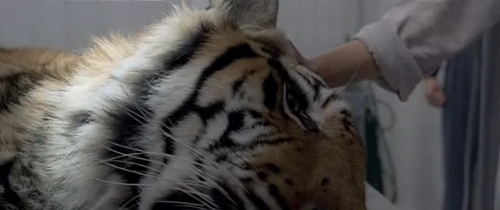
One cannot discuss MANHUNTER without mentioning RED DRAGON, director Brett Ratner’s 2002 take on Harris’s book. RED DRAGON boasts an A-list cast by Hollywood standards and is technically more faithful to the original novel. It also features MANHUNTER cinematographer Dante Spinotti, a rare case of a DP working on both the original and the remake of a film. Spinotti’s RED DRAGON is very warm in palette, with strong earth tones, moving far away from the neon and pastels of MANHUNTER. There are a few throwbacks, with Spinotti’s use of blues at night and some shots of the sky on the beach, but this all seems to be wasted by Ratner’s lack of vision. RED DRAGON falls short of the greatness of MANHUNTER. Edward Norton, a terrific actor in his own right, is all wrong for the part of Will Graham. William Petersen brought a tortured, dangerous edge to the character that Norton can’t establish with that baby face of his.
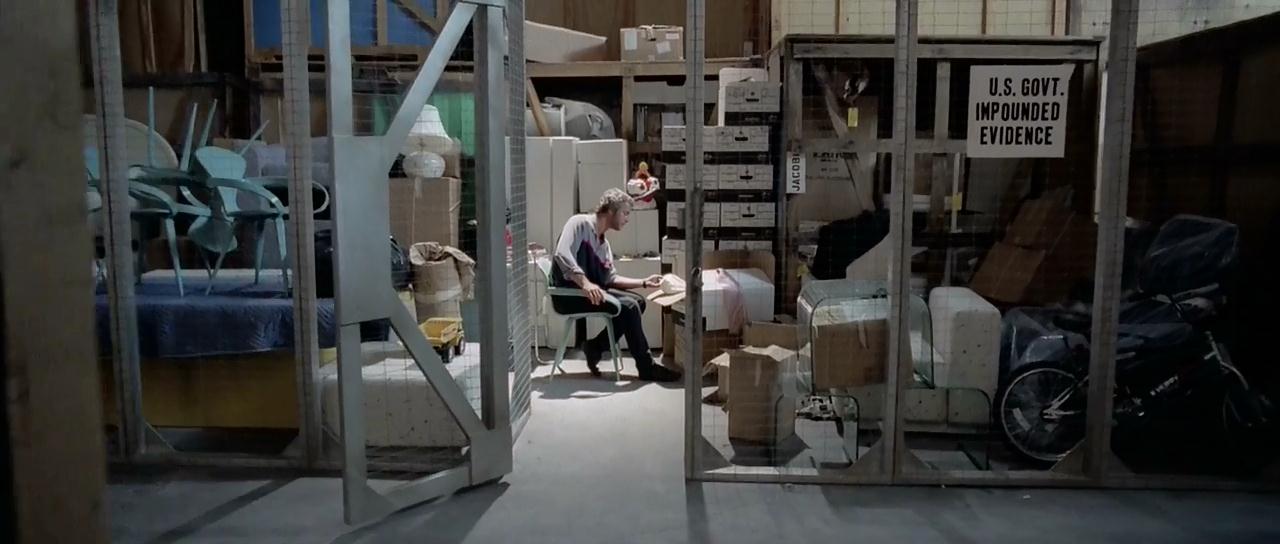
When the two films are compared, viewers who favor RED DRAGON will argue that RED DRAGON is a superior film because it pays more reverence to Thomas Harris’s bestseller. In the past fifteen years or so, there has been a movement in Hollywood insisting that, when adapting the written word, the filmmakers must be absolutely faithful to the book, especially if it means breaking a film up into two parts in order to score some more cash. Film and print are two different mediums, and what may be effective in one may not have the same impact in the other. It can be insinuated that Ratner does not have a particular vision of his own, so he had no other recourse than to follow Harris’s vision word for word. Mann the auteur brought his own vision to the proceedings, and his MANHUNTER is an infinitely more effective film for it. It would appear the real reason to make RED DRAGON was simply to give Anthony Hopkins more screen time as Dr. Lecter.

I love Hopkins’ performance in SILENCE OF THE LAMBS, but with the later sequels, HANNIBAL and RED DRAGON, Hopkins and the filmmakers turn Lecter into a campy Batman villain, spouting out horrible puns and bad one-liners for editors to build a trailer around. And much like Batman villains, Hannibal Lecter becomes a more interesting character than Will Graham or Clarice Starling, even if it is all very silly. That is a disservice to all three characters, one which MANHUNTER never committed.

MANHUNTER eliminates the entire third act of the book, where Dollarhyde threatens Graham’s family, but MANHUNTER doesn’t need it. The climax with Graham confronting Dollarhyde to the tune of Iron Butterfly’s “In-A-Gadda-Da-Vida” makes for a much more satisfying, electric ending. This is Mann the auteur’s vision, not Harris’s, and if done literally, the way Ratner did it, the third act would come off simply as an after-thought, much as it does in RED DRAGON.

Time has been kind to MANHUNTER; it was widely forgotten until the release of SILENCE OF THE LAMBS, and even an inferior remake can’t take away from its power. There remains a MANHUNTER subculture, that touts the film’s greatness from every corner. Some detractors argue that the visual style makes the film feel dated, that characters smoking indoors dates the film, and so on. I don’t think populist audiences get to see many true auteurs make a statement like MANHUNTER anymore, and that’s a crime. The past few years have seen quite a few terrific “neon-noir”-influenced pieces, such as DRIVE, THE GUEST and NIGHTCRAWLER that prove that MANHUNTER’s influence is still being felt today, and hopefully this resurgence will encourage more film fans to give it a look.
.jpg)
– MIKE VANDERBILT.
- Vampsploitation - January 15, 2018
- Hiatussploitation - December 5, 2017
- Live From Fantastic Fest, 2017 - September 28, 2017
Tags: Michael Mann

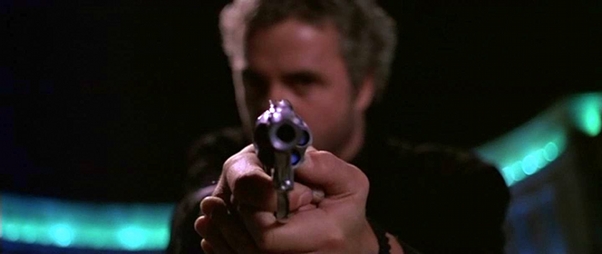
MANHUNTER is one of those movies I should have seen long ago. When it came out, I hadn’t heard of the Harris books and the reviews were mediocre, so I skipped it. Then, SILENCE OF THE LAMBS came out. Like most filmgoers, I loved it. And, yes, I enjoyed how Anthony Hopkins chewed up everything in sight.
Right around the big Oscar wins for SILENCE, Hopkins, Foster et al. people started telling me, “You Gotta see MANHUNTER! Brian Cox is so much better as Lector!” But, I just never got around to it, although it has been easily available and even became a perennial on the Revival Theater circuit. I also HANNIBAL when it came out – Meh. Never bothered with any of the other Lecter flicks, including RED DRAGON.
So, MANHUNTER was on satellite in HD fairly recently. FINALLY, caught up with it.
Got to say, I don’t get all the love from the MANHUNTER cultists. It’s decent. Has its moments. Noonan and Allen are one of the creepiest ‘couples’ I’ve ever seen on screen. Spinotti’s camerawork is fine. But, the film just feels much smaller and has far less gravitas and overall production skill than SILENCE OF THE LAMBS. And, not a ‘budget’ or ‘dated 80s’ thing – it just doesn’t have the weight of SILENCE.
I agree with those that say Brian Cox is a more ‘believable’ Lector, but he is given very little to do in the movie, especially compared to the commanding spector that Hopkins’ character is given in SILENCE. Mann has style to burn as usual, but, without a great script, it’s just form over substance. Too many of the lines are clunkers, and the acting level overall isn’t close to SILENCE, with apparent amateurs in supporting roles.
But, finally, the biggest drawback to MANHUNTER is William Petersen. He is just dull in the lead (as he was in TO LIVE IN DIE IN L.A.). Congrats to him for having a career on TV, but the few features I’ve seen him in fall utterly flat with me.
I’m glad I finally saw it, but, I can’t say that MANHUNTER is the lost “gem” that it’s hardcore fans claim it is.